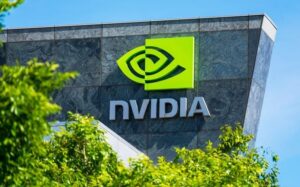Physical Address
304 North Cardinal St.
Dorchester Center, MA 02124
Physical Address
304 North Cardinal St.
Dorchester Center, MA 02124
Nvidia is a name synonymous with cutting-edge technology, particularly in the realms of graphics processing units (GPUs) and artificial intelligence. But how did this giant in the tech industry come to be? Let’s dive into the fascinating history of Nvidia, explore its founders, and understand what the company does today.

The Founders: A Visionary Trio
Nvidia was founded in 1993 by three individuals: Jensen Huang, Chris Malachowsky, and Curtis Priem. Each of these co-founders brought unique skills and experiences to the table, setting the stage for what would become a powerhouse in the tech industry.
The Initial Vision
The founding vision was clear: to create graphics processing technology that would enhance computer graphics and visualization. At the time, the market was ripe for innovation, and Nvidia aimed to fill that gap.
The Release of NV1
In 1995, Nvidia launched its first product, the NV1, a multimedia accelerator that combined 2D and 3D graphics. While it didn’t achieve commercial success, it laid the groundwork for future innovations.
Establishing a Market Presence
By the late 1990s, Nvidia began gaining traction, particularly with the introduction of the RIVA series of graphics cards, which marked a significant improvement in performance and quality.
Introduction of GeForce 256
In 1999, Nvidia launched the GeForce 256, heralded as the world’s first GPU. This was a game-changer, allowing for advanced graphics rendering and complex calculations that could significantly enhance gaming and professional graphics applications.
Dominating the Market
The success of the GeForce brand solidified Nvidia’s position in the gaming industry. Gamers quickly embraced the new technology, leading to Nvidia becoming a household name.
Entering the AI Realm
Nvidia didn’t just stop at gaming. In the 2000s, the company recognized the potential of parallel processing and began to explore applications in artificial intelligence (AI). This move opened new avenues for growth and innovation.
The CUDA Programming Model
In 2006, Nvidia introduced CUDA (Compute Unified Device Architecture), a parallel computing platform that allowed developers to leverage the power of GPUs for general-purpose computing. This was a pivotal moment, as it transformed how developers approached computational problems.
Acquiring New Technologies
Nvidia’s growth strategy included several key acquisitions. In 2010, the company acquired Ageia, a physics technology company, which led to advancements in realistic physics simulation in video games.
Expanding into Mobile and Automotive Markets
In recent years, Nvidia has also made significant inroads into the mobile and automotive sectors, particularly with its Drive platform for autonomous vehicles and the Tegra mobile processor series.
GPUs for Gaming and Beyond
Today, Nvidia is best known for its GeForce line of graphics cards, which dominate the gaming market. These GPUs are renowned for their performance, quality, and innovative features like ray tracing.
AI and Machine Learning
Nvidia has positioned itself as a leader in AI and machine learning, with its Tensor Core GPUs being utilized in data centers worldwide. This technology is pivotal for training neural networks and running AI applications.
Setting Standards
Nvidia has set numerous standards in the graphics and computing industry, influencing everything from game development to scientific research.
The Future of Computing
As the demand for high-performance computing grows, Nvidia continues to innovate, shaping the future of technology and setting the stage for advancements in AI, gaming, and beyond.
FAQs